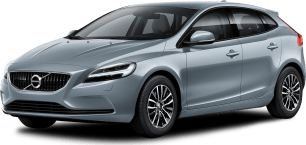At just under 4.9m long, a fraction over 1.9m wide and 1.5m tall the V60 Cross Country is a ‘large’ medium-sized wagon. And a lengthy 2875mm wheelbase means there’s a generous amount of space inside.
Plenty of breathing room up front but storage is a mixed bag. The (cooled) glove box is a decent size, there’s a lidded box (which doubles as a centre armrest) between the seats, and two big cupholders in the centre console with a sliding lid to cover them. Which is great if you want to hide odds and ends in there, rather than locate a couple of large cappuccinos.
However, in front of that, the wireless charging pad takes up a flat piece of real estate next to the gear shift and another small covered section further up rolls back to reveal an awkward little space that looks like a miniature swimming pool with a 12V socket at the deep end.
The lower front door pockets are long, although sliding even medium-size bottles in them is a bit of a struggle, however there’s a useful secondary space in the centre of the armrest.
Move to the back, and sitting behind the driver’s seat, set for my 183cm position, I enjoyed more than adequate head and legroom.
Our kids, two of which are the same height as me, were rubbing shoulders with their slightly shorter older sister, so three across the rear is do-able for short-to-medium-length trips only. And the pronounced transmission tunnel in front of the centre position makes it the short straw option.
That said, up to mid-teenagers will be fine for the full road trip experience.
There’s adjustable ventilation control at the rear of the front centre console and in the back of the b-pillars, while the fold down centre armrest incorporates a pair of pop-out cupholders. The door bins are decent and there are netted map pockets on the front seat backs.
For in-cabin power and connectivity there are three USB-C sockets in the front (one media, two power-only) and another two in the rear, as well as that hidden 12-volt outlet in the front.
If you’re looking for a wagon, boot space is obviously a priority and the V60 provides 648 litres of volume with all seats upright, growing to 1431L with the 40/20/40 split-folding rear seat lowered.
We were able to load in the large CarsGuide pram, with lots of room to spare, and our three-piece luggage set (36L, 95L and 124L) was also swallowed easily.
A ski-port door in the centre rear backrest increases flexibility (but make sure those long loads are properly secured) and a fold-up cargo divider (with bag hooks on the back) is a thoughtful extra.
There are more shopping bag hooks on both sides of the boot, an extra netted space on the passenger side, a 12V socket and four flip-up anchors to safely tie-down loose loads.
The spare is an 80km/h speed-limited space saver and if you’re into towing, the V60 Cross Country is rated to haul an 1800kg braked trailer.
Also worth noting trailer-stability control is standard. Nice.

